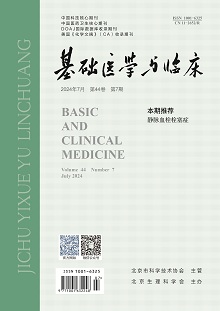Effect and mechanism of all-trans retinoic acid on proliferation, migration, and invasion of mouse hepatocellular carcinoma cell line Hepa1-6
2016, 36(2):
211-217.
 Asbtract
(
783 )
Asbtract
(
783 )
 PDF (2096KB)
(
400
)
Related Articles |
Metrics
PDF (2096KB)
(
400
)
Related Articles |
Metrics
Objective To observe the effect of all-trans retinoic acid (ATRA) on the proliferation, apoptosis, migration and invasion of hepatocellular carcinoma cell line Hepa1-6 cell and investigate the mRNA expression of mesenchymal markers and microRNAs. Methods The Hepa1-6 cells were treated with DMEM containing different concentrations of ATRA (0, 0.1, 1.0, 10.0 μmol/L). Trypan blue and Crystal Violet Staining were used to assess cell proliferation at indicated time points. The apoptosis was examined by Hoechst Staining. Migration and invasion abilities of cells were detected by Wound Healing assay and Transwell assay, respectively. The mRNA expression of mesenchymal markers (N-cadherin, sail, vimentin) of Hepa1-6 with ATRA at different concentrations and miRNA200s with10.0 μmol/L ATRA treatment were detected by real-time PCR. Results Compared with control group (0 μmol/L), after treatment with ATRA, the proliferation, migration and invasion capacity of Hepa1-6 cells were obviously inhibited (P<0.05), and the apoptosis rates increased significantly. The mRNA expression of mesenchymal markers (N-cadherin, sail, vimentin) was decreased. Furthermore, the role of ATRA on these was strengthened with the increased concentrations of ATRA treatment. In addition, miR200a-3p, miR200c-3p, miR141-3p were up-regulated. Conclusion ATRA can inhibit the growth, migration, invasion and down-regulate mesenchymal markers (N-cadherin, sail, vimentin) of hepatocellular carcinoma cell line Hepa1-6 cell, induce its apoptosis in a concentration-dependent manner. These may be related to the up-regulation of miR200s and inhibition of mesenchymal phenotypes.


